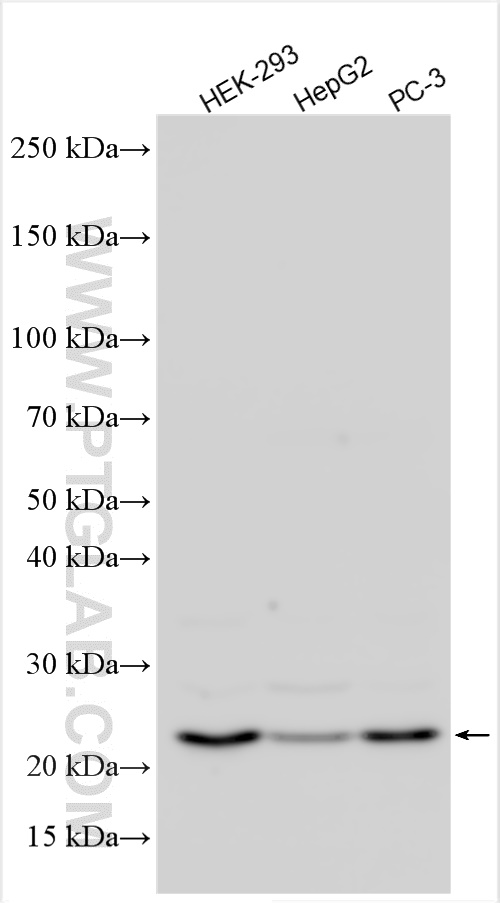TRAPPC5 Polyclonal antibody
TRAPPC5 Polyclonal Antibody for WB, ELISA
Host / Isotype
Rabbit / IgG
Reactivity
human
Applications
WB, ELISA
Conjugate
Unconjugated
Cat no : 20752-1-AP
Synonyms
Validation Data Gallery
Tested Applications
| Positive WB detected in | HEK-293 cells, HepG2 cells, PC-3 cells |
Recommended dilution
| Application | Dilution |
|---|---|
| Western Blot (WB) | WB : 1:1000-1:8000 |
| It is recommended that this reagent should be titrated in each testing system to obtain optimal results. | |
| Sample-dependent, Check data in validation data gallery. | |
Product Information
20752-1-AP targets TRAPPC5 in WB, ELISA applications and shows reactivity with human samples.
| Tested Reactivity | human |
| Host / Isotype | Rabbit / IgG |
| Class | Polyclonal |
| Type | Antibody |
| Immunogen | TRAPPC5 fusion protein Ag13185 |
| Full Name | trafficking protein particle complex 5 |
| Calculated Molecular Weight | 188 aa, 21 kDa |
| Observed Molecular Weight | 21-23 kDa |
| GenBank Accession Number | BC042161 |
| Gene Symbol | TRAPPC5 |
| Gene ID (NCBI) | 126003 |
| Conjugate | Unconjugated |
| Form | Liquid |
| Purification Method | Antigen affinity purification |
| Storage Buffer | PBS with 0.02% sodium azide and 50% glycerol pH 7.3. |
| Storage Conditions | Store at -20°C. Stable for one year after shipment. Aliquoting is unnecessary for -20oC storage. 20ul sizes contain 0.1% BSA. |
Background Information
Transport protein particle (TRAPP, also known as trafficking protein particle), a multimeric guanine nucleotide-exchange factor, regulates multiple membrane trafficking pathways (PMID: 20966969). TRAPPC5 is a component of the TRAPP complexes and is involved in processes such as intracellular vesicle transport. In hepatocellular carcinoma, upregulated expression of TRAPPC5 can enhance cancer cell proliferation, migration, invasion and epithelial-mesenchymal transition (EMT) and promote tumorigenesis (PMID: 35425722).
Protocols
| Product Specific Protocols | |
|---|---|
| WB protocol for TRAPPC5 antibody 20752-1-AP | Download protocol |
| Standard Protocols | |
|---|---|
| Click here to view our Standard Protocols |


